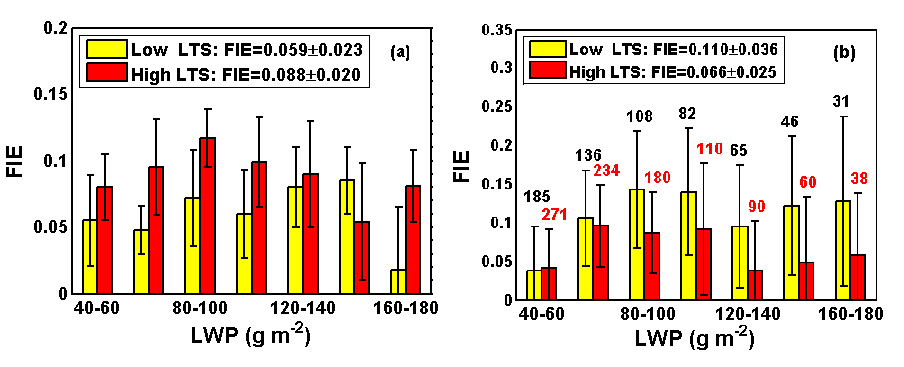A major artifact in aerosol-cloud-interaction studies discovered from Azores measurements
Submitter:
Li, Zhanqing — University of Maryland
Area of research:
Cloud-Aerosol-Precipitation Interactions
Journal Reference:
Science
Using 19 months of cloud and aerosol measurements made on Graciosa Island in the Azores, the response of marine boundary layer (MBL) non-precipitating cloud properties to changes in aerosol loading is examined. How meteorological parameters affect the diversity in the sensitivity of these MBL clouds to aerosol perturbations and the magnitude of the aerosol first indirect effect (FIE) is also investigated. These are important science issues in the study of cloud–aerosol–precipitation interactions.
Impact
A positive relationship between the FIE and atmospheric stability is derived from surface-retrieved cloud and aerosol information, contradicting the negative relationship found from satellite data. The contrast originates from differences in the observed cloud properties at different levels from satellite and surface sensors, which likely explains some major discrepancies in past studies concerning aerosol-cloud interactions.
Summary
By constraining the liquid water path (LWP) to a fixed range of values, the FIE is quantified by analyzing the relative susceptibility of the droplet effective radius to aerosol number concentration. FIE decreases as the LWP increases. Greater differences in the magnitude of the FIE are observed depending on atmospheric stability and vertical motion conditions. The magnitudes of the FIE calculated from surface-retrieved cloud properties are larger under more stable conditions, while the magnitudes of the FIE calculated from satellite-retrieved cloud properties show an opposite relationship. This happens because the satellite can only detect cloud droplet effective radii near cloud tops. The magnitude of the FIE changes more under ascending-motion conditions as LWP changes. It appears to be higher under ascending-motion conditions for clouds with low LWP and under descending-motion conditions for clouds with high LWP. The contrasting dependence of the FIE on atmospheric stability estimated from surface- and satellite-retrieved cloud properties implies that the dependence of the response of cloud properties to aerosol perturbations on thermodynamic conditions varies according to the approach used to retrieve cloud properties, an artifact that must be accounted for when studying aerosol-cloud interactions.


